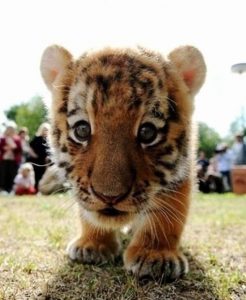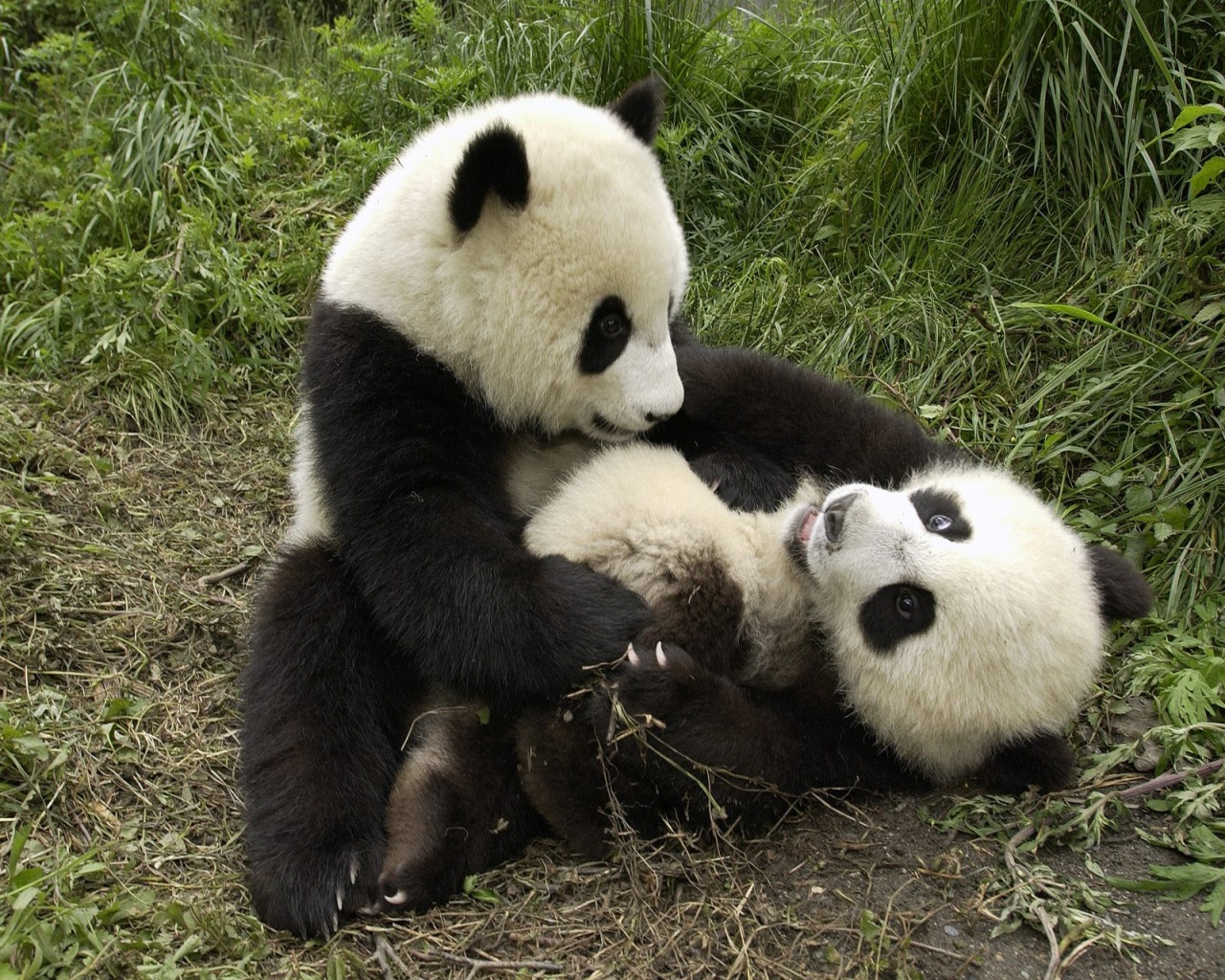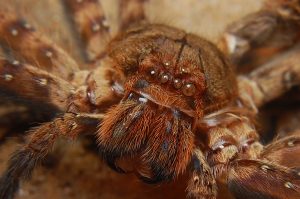Black paws padded on soft leaves. Branches rustled, wind blew. Pushing its way across rock is a black and white beast. It looks up towards the sky, then the trees, and finally plops down over a log and rolled around. All at once, a crowd of people squeal and push for a closer look. The panda rubs its great paws over its face, effectively winning peoples’ affections with only a simple gesture. As a national symbol of China, it had the life of a celebrity. Its image graces bulletin boards, sits in stuffed animal collections, and adorns iPhones of teens worldwide. And thanks to heavy conservation efforts in China, the Giant Panda is now officially off the endangered list. A wonderful success story, thanks to its cute habits and distinctive patterns.
Unfortunately, this does not happen often with other animals, and as a result, thousands of species are going extinct every year. Many of those species have never been identified by scientists. With so many disappearing every day, we have to choose the ones to focus to save. Ideally we should go for the ones with most ecological significance, but it doesn’t always seem to be the case. While endangered animals such as polar bears, tigers, and pandas are well known and extensively protected through countless fundraisers, animals such as the Ganges shark, the California condor, and opossum pipefish don’t get the same attention. We tend to base our decisions on the wrong factors, and current research concluded that our decisions comes down to a few things: cuteness/attractiveness, human-likeness and color. As Daniel Frynta, an ecologist at Charles University, is quoted by Estren, “It’s got to be big. It’s got to be cute. It’s got to behave or look humanlike. If a critter is colorful, we like it. We also like it when zoo denizens play and speak and travel in family groups.”
If you were like me, you would acknowledge the fact that you clicked this article simply because of the cute panda at the top of the page. It’s so cute! According to Borgi and Francesca, one of the main factors of animal attractiveness is cuteness, determined by a set of facial features known as the baby schema. Characteristics include large eyes and head, small nose and mouth, and an overall round face. People who respond to this behavior display increased willingness to protect, and decreased aggression, and this behavior occurs even if they do not personally know the subject. Estren argues that mammals, which often possess these infantile characteristics, are preferred over reptiles, fish, etc. as a result. People are more likely than not to save and protect animals when they appear cute, and this extends to animal conservation. It is why Giant pandas were able to get off the endangered list, but others remain.
Similarly, attractiveness plays a key role in which animals people prefer to save. Estren remarks that zoos take full advantage of this by choosing to care for more attractive and cute animals since they would churn out more profit. There is also a “beauty-goodness” stereotype where more attractive animals are viewed with inherent goodness, for example dogs. This applies to humans in the same way. Gunnthorsdottir also adds another layer to this. In her research, flyers were shown to students, one depicting a bat and the other an ape. Some flyers had no picture, an unattractive picture, or an attractive picture of the animal. Results stated that people were more willing and supportive of the animals after seeing the flyers with the more attractive animal. Furthermore, unattractive animals were perceived as more attractive if they were endangered. That means that there could be link between value and scarcity of the animal.

Another factor is human-likeness. There are many videos of animals on YouTube performing normal human traits such as walking, talking, dancing, as well as other traits generally considered unique to humans. Koko the gorilla was famous for her intelligence and ability to pick up human language; she was able to communicate with people through sign language. Borgi and Cirulli acknowledge that anthropomorphic features play a large role in decisions, stating that humans prefer animals that are more phylogenetically closer to us. In other words, we help those who are like us and who we can relate to. We feel empathy when we see mother animals take care of their young, and apes grooming each other and such feelings will make us want to protect them.
Another study by Prokop and Fančovičová examines attitudes towards animals of a certain coloring. They hypothesized that our affinity to bright colors, especially red, is a survival instinct. The researchers showed images of natural images of aposematic (colorful) and cryptic (animals with colors that match surroundings, as well as altered images with color type reversed, meaning aposematic animals were altered into cryptic and vice versa. Their experiment showed that people showed a greater disgust, fear, and lesser willingness to protect cryptic animals, both in the natural and altered images.
However, it is also not easy to simply get people to donate or volunteer for just any animal conservation effort. Volunteers are also biased when it comes to helping endangered species. Abell finds in a survey study that there exists certain conditions or requirements that must be met in order for people to want to help animals. These requirements include finding common ground with the animal and identifying with the animal. And as other research indicates, some animals are more identifiable with humans than others. Volunteers would therefore be more likely to save certain animals over others.
Many species are going extinct every second of the day, yet we are too selective in our efforts to save them. Next time we go to the zoo or go to donate to a wildlife conservation fund, think about the animals that are continuously showered in love and those who sit on the side, unknown. A little more attention goes a long way to slowing down current extinction rates.
By: J. Dang
References
Abell, Jackie. “Volunteering to Help Conserve Endangered Species: An Identity Approach to Human-Animal Relationships.” Journal of Community & Applied Social Psychology, 23.2 (2012): 157–170. Wiley Online Library. Accessed 3 Sept. 2017. doi:10.1002/casp.2114
Borgi, Marta, and Francesca Cirulli. “Pet Face: Mechanisms Underlying Human-Animal Relationships.” Frontiers in Psychology, 7.298 (2016): ResearchGate, Accessed 3 Sept. 2017. doi:10.3389/fpsyg.2016.00298
Dell’Amore, Christine. “Giant Pandas, Symbol of Conservation, Are No Longer Endangered.” National Geographic, National Geographic Society, 4 Sept. 2016, news.nationalgeographic.com/2016/09/pandas-vulnerable-endangered-species/. Accessed 24 Sept. 2017.
Estren, Mark J. “The Neoteny Barrier: Seeking Respect for the Non-Cute.” Journal of Animal Ethics, 2.1 (2012): 6–11. JSTOR. Accessed 3 Sept. 2017. doi:10.5406/janimalethics.2.1.0006.
Gunnthorsdottir, Anna. “Physical Attractiveness of an Animal Species as a Decision Factor for its Preservation.” Anthrozoos: A Multidisciplinary Journal of The Interactions of People & Animals, 14.4 (2001): 204–215. Taylor & Francis Online. Accessed 3 Sept. 2017. doi:10.2752/089279301786999355.
Prokop, P., and J. Fančovičová. “Does colour matter? The influence of animal warning coloration on human emotions and willingness to protect them.” Animal Conservation, 16.4. (2013):458–466. Online Wiley Library. Accessed 3 Sept. 2017. doi:10.1111/acv.12014.
Yong, Ed. “Can Humans Understand Chimps?” The Atlantic, Atlantic Media Company, 15 Aug. 2017, www.theatlantic.com/science/archive/2017/08/can-humans-understand-chimps/536826/. Accessed 24 Sept. 2017.


